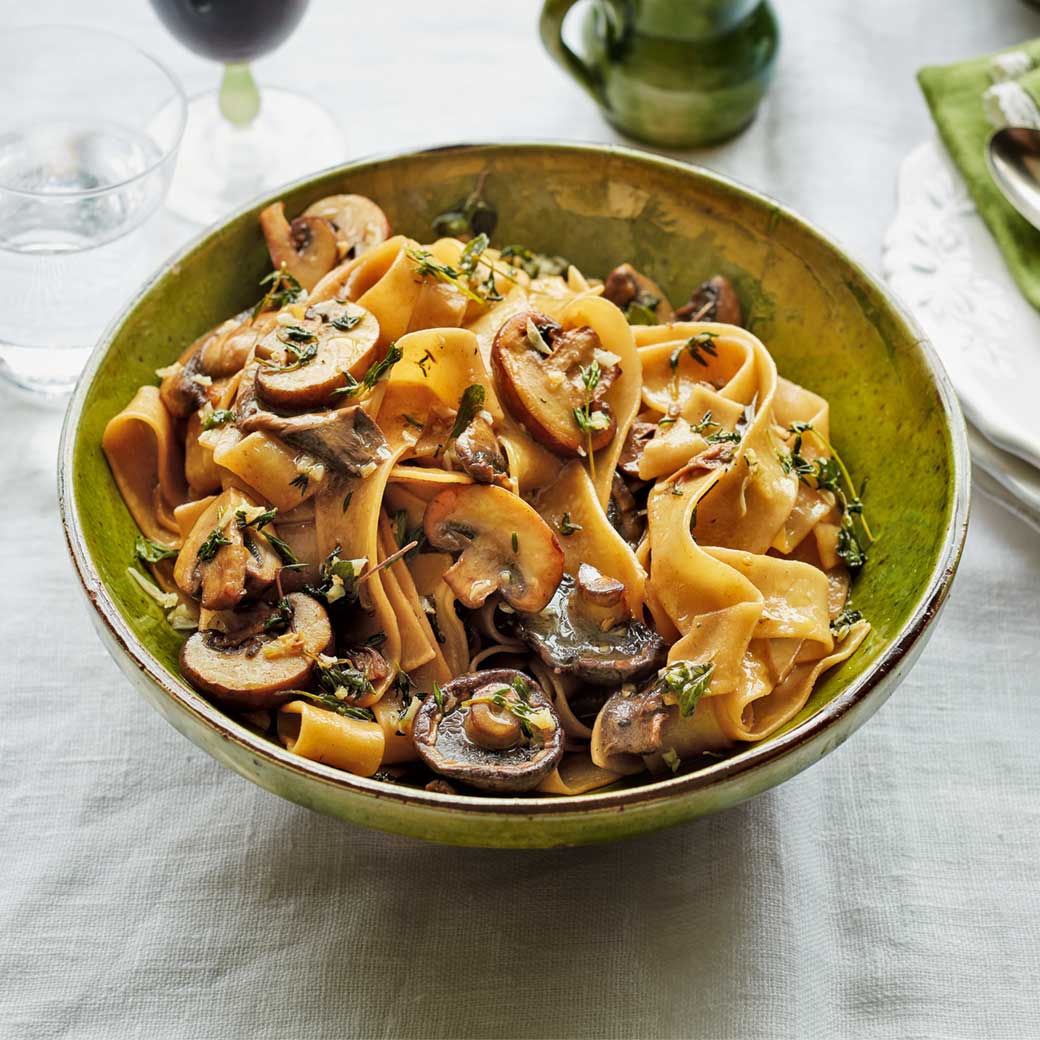Caloric Content and Serving Size

Pappadelle con fundgi nutrition facts – Pappadelle con funghi, a delightful pasta dish featuring earthy mushrooms, can vary wildly in its calorie count depending on several factors. Understanding these factors allows you to make informed choices about portion size and ingredients, ensuring you enjoy this delicious meal without exceeding your dietary goals. Let’s delve into the details of calorie calculations and how different additions affect the final count.
While pappadelle con funghi offers a rich, savory profile, its nutritional value hinges heavily on the type and quantity of ingredients. A balanced approach considers the caloric density of the pasta itself, compared to the nutritional benefits of the mushrooms. For a contrasting perspective on naturally sweet and fiber-rich options, consider the nutritional profile of a different food group, such as checking out the details on honeycrisp apple nutrition facts , which highlights the benefits of incorporating fruits into a balanced diet.
Ultimately, a well-rounded diet necessitates mindful consideration of various food groups, returning us to the need for careful ingredient selection in our pappadelle con funghi.
Calorie Estimates for Pappadelle con Funghi, Pappadelle con fundgi nutrition facts
The calorie count of a serving of pappadelle con funghi is heavily dependent on the serving size and the specific ingredients used. A standard serving of pasta is typically considered to be around 1 cup (approximately 150 grams) of cooked pasta. However, a restaurant serving might be significantly larger. Assuming a 150-gram serving of pasta, and a moderate amount of mushrooms and a simple sauce (olive oil, garlic, herbs), we can estimate the calorie count to be roughly 350-450 calories.
This is a broad range because mushroom varieties and the amount of olive oil used will impact the final number. A larger serving, or a richer sauce, will naturally increase the calorie count.
Impact of Added Ingredients on Caloric Value
Adding ingredients like cream, cheese, or butter dramatically increases the calorie density of pappadelle con funghi. Cream, for example, is very high in fat and calories. A half-cup of heavy cream adds approximately 400-500 calories to the dish. Similarly, cheeses like Parmesan or Pecorino Romano, while adding delicious flavor, contribute significant calories. A generous two tablespoons of grated Parmesan cheese can add another 100 calories or more.
Butter, even in small quantities, adds substantial fat and calories. The type of butter also plays a role; clarified butter will be slightly lower in calories than regular butter.
Calorie Comparison Table for Different Versions
The following table provides a comparison of the approximate calorie counts for various versions of pappadelle con funghi, assuming a 150-gram serving of pasta. These are estimates, and the actual calorie count may vary slightly depending on specific ingredients and preparation methods.
| Dish Version | Pasta (g) | Added Ingredients | Approximate Calories |
|---|---|---|---|
| Basic (Olive Oil & Garlic) | 150 | Olive oil, garlic, herbs | 380-420 |
| Creamy (Heavy Cream) | 150 | Olive oil, garlic, herbs, 1/2 cup heavy cream | 780-870 |
| Parmesan & Cream | 150 | Olive oil, garlic, herbs, 1/2 cup heavy cream, 2 tbsp Parmesan | 880-970 |
| Cheesy (Parmesan & Butter) | 150 | Olive oil, garlic, herbs, 2 tbsp Parmesan, 1 tbsp butter | 530-580 |
Impact of Mushroom Variety

The delightful earthiness of pappadelle con funghi hinges significantly on the type of mushrooms used. Different varieties boast unique flavor profiles and, importantly, varying nutritional compositions. This impacts the overall nutritional value of your pasta dish, adding layers of benefit beyond just taste. Choosing wisely can boost the vitamins, minerals, and antioxidants you’re enjoying.
While many mushroom varieties lend themselves beautifully to this dish, cremini, shiitake, and porcini are among the most popular. Let’s delve into a comparison of their nutritional profiles to understand how each contributes to the nutritional richness of your pappadelle con funghi.
Nutritional Comparison of Mushroom Varieties
The following table summarizes key nutritional differences between cremini, shiitake, and porcini mushrooms, offering a clearer picture of how your choice impacts the nutritional value of your meal. Note that these values are approximate and can vary depending on growing conditions and preparation methods.
| Mushroom Type | Vitamins & Minerals (highlights) | Antioxidants | Other Nutritional Benefits |
|---|---|---|---|
| Cremini (Button Mushrooms) | Good source of selenium, potassium, and riboflavin; contains smaller amounts of Vitamin B6, niacin, and folate. | Contains various antioxidants, including phenolic compounds, which contribute to their anti-inflammatory properties. | Relatively low in calories and fat, making them a healthy addition to any diet. Their mild flavor makes them versatile. |
| Shiitake | Excellent source of B vitamins (especially riboflavin and niacin), copper, and selenium. Also contains significant amounts of Vitamin D when exposed to UV light during cultivation. | Rich in lentinan, a polysaccharide with immune-boosting properties and antioxidant activity. Also contains other antioxidants like ergothioneine. | Known for their umami flavor and potential health benefits linked to immune function. |
| Porcini | Contains good levels of potassium, phosphorus, and niacin. Nutritional content can vary depending on drying methods. | Antioxidant levels can vary, but they contribute to the overall antioxidant profile of the dish. | Intense earthy flavor and aromatic profile adds depth to the pappadelle con funghi. Often dried and rehydrated before use. |
FAQ Guide: Pappadelle Con Fundgi Nutrition Facts
What are the best mushrooms to use for a low-calorie pappadelle con funghi?
Shiitake and oyster mushrooms are generally lower in calories than cremini or porcini.
Can I make pappadelle con funghi gluten-free?
Yes, use gluten-free pasta. Ensure all other ingredients are also gluten-free.
How can I reduce the sodium content?
Use low-sodium broth and avoid excessive salt during cooking. Choose low-sodium cheeses.
Is pappadelle con funghi suitable for a vegan diet?
A vegan version is possible by omitting cheese and using vegan cream alternatives.
